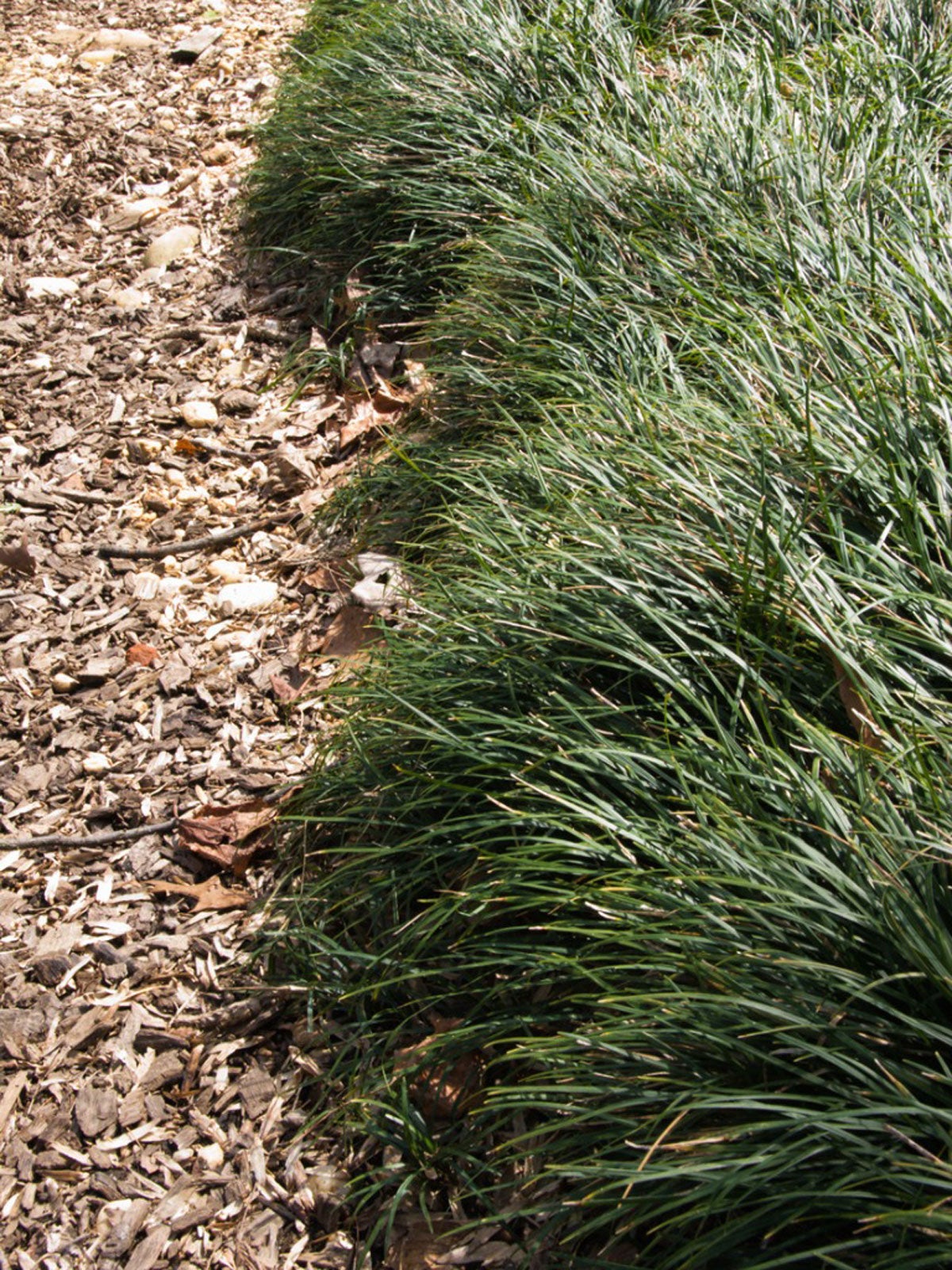Liriope Grass Edging: How To Plant A Border Of Monkey Grass


Liriope is a tough grass that is often used as a border plant or lawn alternative. There are two main species used, both of which are easy to care for and have few pest or disease problems. Making a Liriope landscape border produces a tidy, low-growing edge that doesn't need mowing and remains green year after year.
Why Use Liriope as a Border?
If you want an easy-to-grow, low-maintenance border that stays short and has no major issues, look to Liriope grass. This tough, adaptable evergreen plant makes a lovely edging in formal gardens, outlines paths and pavers well, or can be used as a hillside erosion stabilizer. Using Liriope as a border offers an easy solution for many landscape problems.
Liriope is also known as lilyturf, border grass, and monkey grass. Of the two main varieties, one is clumping and the other creeping, although both spread through rhizomes. In USDA zones 5 to 10, a border of monkey grass is a no-fuss solution. A landscape border with this grass produces a low, neatly foliaged groundcover that sets off taller plants.
When you plant Liriope spicata, you will end up with a creeping groundcover that, in some situations, can become invasive. Liriope muscari is a clumping form that will eventually set out offsets and increase the plant's presence. It makes an excellent and easily controlled grass edging. Both forms tolerate sun to part shade, almost any soil provided it is well-draining, and even periods of drought.
Planting Liriope Grass Edging
As an alternative to rock, gravel, or even grass around beds and paths, use Liriope to set off and define different areas. Liriope spicata is best used as a ground cover but L. muscari makes a perfect edging. Plant each Lilyturf one foot (30.5 cm.) apart. Keep the plants moderately moist but never soggy.
Mulch around the plants to prevent competitive weeds and help cool soil and conserve moisture. In time, monkey grass will spread by rhizomes and produce smaller versions of itself. This helps a border to fill in, but if you want the area more controlled and sparse, simply dig out and detach the new plants. You can always plant them in a container or elsewhere.
Border Grass Care
A border of monkey grass is very self-sufficient once established. In fact, this border grass care is almost nonexistent, making it a perfect "set and forget" plant.
Sign up for the Gardening Know How newsletter today and receive a free copy of our e-book "How to Grow Delicious Tomatoes".
The plants often get rust and other fungal diseases of foliage, so use a soaker hose or another method to water under the leaves or water only in the morning when the sun can quickly dry them off. Water established grass regularly in hot weather.
Feed the plants in early spring with a slow-release formula.
There is no need to mow this grassy plant, but you can if you want to rejuvenate the plant; mow or shear in late winter or early spring.

Bonnie Grant is a professional landscaper with a Certification in Urban Gardening. She has been gardening and writing for 15 years. A former professional chef, she has a passion for edible landscaping.